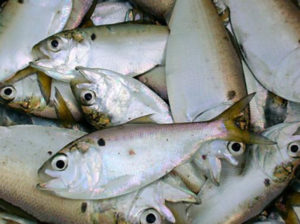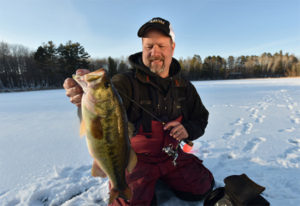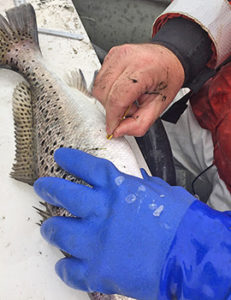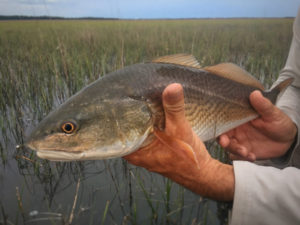Bassmaster Classic Week Offers Tons Of Fun Things To Do And See In Knoxville
KNOXVILLE, Tenn. — In two weeks, bass fishing fans from across the world will descend on the banks of the Tennessee River in Knoxville, Tenn., for the 49th Annual GEICO Bassmaster Classic presented by DICK’S Sporting Goods.
Most are aware of the broad range of fishing-related activities that are part of “Classic Week,” but first-time visitors to Knoxville will be amazed at the diverse activities and attractions that make Knoxville a great host destination for the “Super Bowl of Bass Fishing.”
“Knoxville looks forward to not only showcasing our area’s beautiful waterways, but also all of the attractions, dining, entertainment and more,” said Chad Culver, Senior Director of the Visit Knoxville Sports Commission. “It’s the Tennessee River and our city’s incredible vibrancy that make Knoxville a one-of-a-kind destination and the perfect fit for the Bassmaster Classic.”
Before and after watching 52 of the best anglers in the world weigh in their heaviest daily limits of bass, fans will face the daunting task of deciding what to do next.
Knoxville Hot Spots
Located within a day’s drive of nearly half of the United States’ population and just 45 minutes from the Great Smoky Mountains, Knoxville is where music meets mountains, art meets adventure and no one meets a stranger.
The vibrant and very walkable downtown area — where most Classic venues are centered — offers a variety of fun and unique entertainment offerings, plus shopping and more than 80 dining options in and around Market Square. This popular gathering spot is also home to live music, festivals and more — and it’s just minutes from Knoxville’s increasingly popular “Urban Wilderness,” a 1,000-acre stretch offering more than 50 miles of walking, hiking and biking trails, connecting parks, trails, Civil War sites and recreational amenities.
In addition to barbecue (of course), Knoxville boasts a culinary scene that is receiving national attention. And it pairs well with a growing number of craft breweries and distilleries in Knoxville.
Music lovers know that Knoxville is one of America’s most vibrant cities for live music. From classical to bluegrass, country to rock, live music is on the streets, the square and stages of famous venues like the historic Tennessee Theatre, the official state theatre of Tennessee. Blue Plate Special concerts are also free to the public every Monday-Saturday at noon at the WDVX studios located inside the Downtown Knoxville Visitors Center.
History buffs will want to visit Knoxville to learn more about Civil War sites in the area, and tour earthworks, battle sites and historic homes. Art lovers make sure to visit the Knoxville Museum of Art, and families should allow extra time to see Zoo Knoxville, home of the Tiger Forest.
Fishing fans can plan their visit by going to visitknoxville.com and downloading the free Visit Knoxville App to stay up to date on what’s happening during the 2019 Bassmaster Classic.
Classic Attractions
Visitors and Knoxville residents alike will find plenty to see and do at Classic venues. Here’s a taste:
Takeoffs — Cheer on your favorite Classic competitor at morning takeoffs at Volunteer Landing on the Tennessee River at 7:30 a.m. ET each morning. Coffee and hot chocolate will be available on-site from local Classic partner Pilot Flying J.
Demo rides — While you’re at Volunteer Landing, try out the latest boats and engines from Mercury, Nitro, Skeeter, Triton and Yamaha.
Shopping spree — The Bassmaster Classic Outdoors Expo presented by DICK’S Sporting Goods at the Knoxville Convention Center and World’s Fair Exhibition Hall spans almost 250,000 square feet of exhibit space filled with the newest and hottest in lures, tackle, gear and boats and motors. Expo hours are noon-7 p.m. Friday, March 15; 10 a.m.-6 p.m. Saturday, March 16; and 10 a.m.-4 p.m. Sunday, March 17. All events are free to attend.
Dramatic weigh-ins — Doors of Thompson-Boling Arena on the University of Tennessee campus will open Friday through Sunday at 3 p.m. for B.A.S.S. Life and Nation members and at 3:15 p.m. for the general public.
Get hooked — Bring the kids to check out the Bassmaster Get Hooked On Fishing presented by Toyota, Shakespeare and RBFF in World’s Fair Park from 10 a.m. to 2 p.m., Friday to Sunday. Activities include casting lessons, a kid’s fishing pond, a long-jump dog competition, and more.
Meet the Elites — Several 2019 Bassmaster Elite Series pros will be stopping by the B.A.S.S. booth in the Expo to meet fans and sign autographs.
Free spooling — Bring your reels (up to three) to the Pure Fishing booth, where you can get them filled with Berkley, SpiderWire or Stren line. Berkley plans to give away 1.5 million yards of line during the three days of the show.
Go LIVE — Watch Classic LIVE hosts Tommy Sanders, Mark Zona and Davy Hite as they provide analysis and live updates of fishing action from the LIVE set in the Bassmaster Classic Outdoors Expo. Classic LIVE is streamed on Bassmaster.com and on the ESPN app.
Student anglers — See the rising stars competing in the Bassmaster High School Classic on Saturday, March 16, and in the annual College Classic Sunday, March 17, with weigh-ins on stage in Thompson-Boling Arena.
Help conservation — Head over to the TVA booth and find out what you can do to help control the Asian Carp population. Also check out the fish tank containing the species of fish you can find in TVA fisheries.
Support the troops — Come out to the weigh-in on Friday and help us honor our country’s military service members. The first 300 to show their designated military ID at the B.A.S.S. booth will receive an official Bassmaster hat. Many other exhibitors will also be offering discounts and promotions for service members.
Be a B.A.S.S. winner — Enter the Fish with Chris and Trait Zaldain Sweepstakes at the B.A.S.S. booth and other points around the Expo.
Thank a first responder — Come to the weigh-in Saturday to show your support and salute our first responders and law enforcement officers. The first 300 to show their official ID/badge at the B.A.S.S. booth will receive an official Bassmaster hat.
Get the T-shirt — The official Bassmaster Classic T-shirt is the ultimate Classic souvenir. Get one, and check out other logo products at the B.A.S.S. merchandise booth.
Watch the clock — Be present in the Nitro/Bass Pro Shops booth for their hourly giveaway items. You can also register for special promotions.
Toyota attractions — At the Toyota booth, kids can meet the Paw Patrol on Saturday and Sunday, racing fans can check out the NASCAR Racing Challenge, everyone can meet and thank Medal of Honor recipient Dakota Meyer on Friday, and Toyota owners can receive a prize by showing the key to their Toyota vehicle.
Watch the winner — Witness history in the making as the 2019 GEICO Bassmaster Classic champion is crowned at the conclusion of Sunday’s weigh-in.
2019 Bassmaster Classic Title Sponsor: GEICO
2019 Bassmaster Classic Platinum Sponsor: Toyota
2019 Bassmaster Classic Premier Sponsors: Berkley, Humminbird, Mercury, Minn Kota, Nitro Boats, Power-Pole, Skeeter Boats, Talon, Triton Boats, Yamaha, Abu Garcia
2019 Bassmaster Classic Local Host: Visit Knoxville Sports Commission
2019 Bassmaster Classic Local Partners: Calhoun’s, Pilot Flying J, TVA
About B.A.S.S.
B.A.S.S. is the worldwide authority on bass fishing and keeper of the culture of the sport. With more than 510,000 members internationally, B.A.S.S. is not only home to the nation’s premier fishing tournament trails, but it also boasts the most expansive and comprehensive media network in the fishing industry. Its media include The Bassmasters on the ESPN networks, more than 130 hours of tournament programming on the Pursuit Channel, 250 hours of on-the-water streaming coverage on Bassmaster LIVE and 1 million monthly visitors to the flagship website on bass fishing – Bassmaster.com. B.A.S.S. also provides more than 4.4 million readers with the best in bass fishing coverage through Bassmaster and B.A.S.S. Times, and its radio and social media programs and events reach hundreds of thousands each month.
The Bassmaster Tournament Trail includes the most prestigious events at each level of competition, culminating in the ultimate event on the biggest stage for competitive anglers, the GEICO Bassmaster Classic presented by DICK’S Sporting Goods. The trail also includes the Bassmaster Elite Series, BassPro.com Bassmaster Open Series, B.A.S.S. Nation Series, Carhartt Bassmaster College Series presented by Bass Pro Shops, Mossy Oak Fishing Bassmaster High School Series, and the Bassmaster Team Championship.



